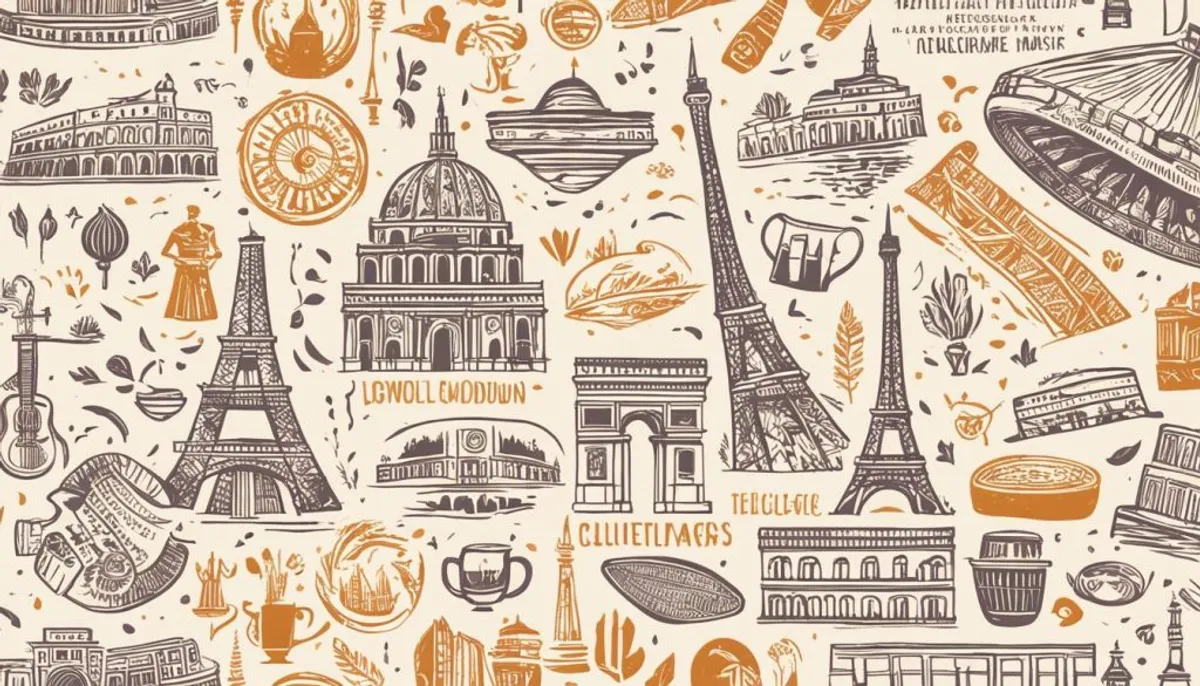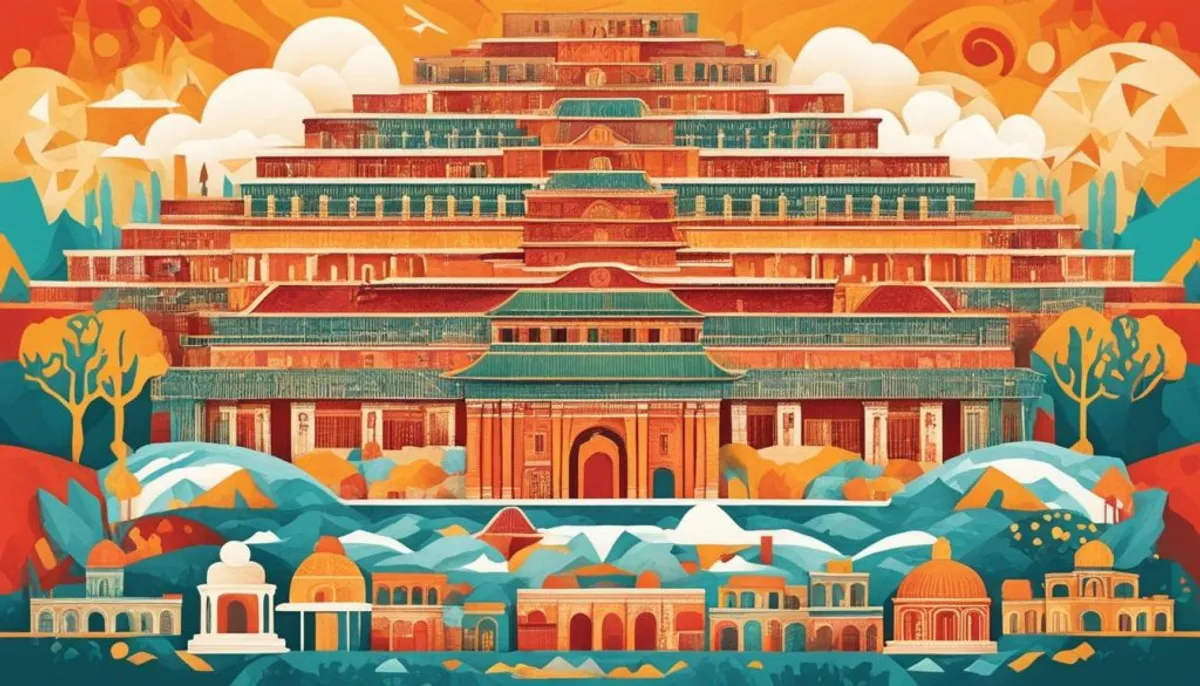The cultural heritage encompasses unique tangible and intangible assets. They hold historical, artistic, and symbolic values. It includes artifacts, monuments, sites, museums, and more.
It also includes traditions, craftsmanship, and knowledge about nature.  This heritage is a gift from past generations. We must preserve it and pass it on to future generations.
This heritage is a gift from past generations. We must preserve it and pass it on to future generations.
The cultural heritage is crucial for cultural diversity and dialogue between cultures. It showcases the richness and diversity of global cultures. This highlights the importance of humanity's cultural heritage.
What is cultural heritage?
The cultural heritage is a vast and diverse set. It includes tangible and intangible assets from the past. These assets are passed down to future generations. The United Nations Educational, Scientific and Cultural Organization (UNESCO) defines cultural heritage. It includes tangible cultural heritage and intangible cultural heritage.
Definition of cultural heritage according to UNESCO
UNESCO views cultural heritage as “the totality of assets, tangible or intangible, of artistic, historical, or symbolic importance.” It encompasses:
- Tangible cultural heritage, such as historic monuments and works of art.
- Intangible cultural heritage, including traditions and craftsmanship.
- Natural heritage, related to human activities, such as landscapes and natural sites.
Cultural heritage does not belong to anyone in particular. It is a public and common good of humanity. Its preservation and transmission are essential for future generations.
The different forms of cultural heritage
Cultural heritage is divided into two main categories: tangible heritage and intangible heritage. Each category is crucial for preserving and sharing our cultural legacy.
Tangible heritage
Tangible heritage includes things we can touch, such as historic monuments and archaeological sites. It also includes buildings, architecture, and works of art. These elements showcase our history and traditions.
Intangible heritage
Intangible heritage encompasses traditions and craftsmanship. It includes languages, recipes, games, and stories. These elements are passed from one to another, creating our cultural identity.
Tangible heritage and intangible heritage are interconnected. Together, they illustrate the richness and diversity of our cultures.
| Tangible Heritage | Intangible Heritage |
|---|---|
|
|

What is cultural heritage?
The cultural heritage encompasses assets, whether tangible or intangible, that hold value for a community. In France, among these assets, we find:
- Historic monuments
- Museums
- Libraries
- Archives
- Folk traditions
- Craftsmanship
Cultural assets are protected, restored, and valued by the state and society. This allows them to be passed on to future generations. The preservation of this cultural heritage is crucial for the identity and diversity of France.
By preserving and valuing this cultural heritage, we strengthen community ties. It also allows for the transmission of a territory's wealth to future generations.
The emergence of the notion of heritage
The notion of heritage gradually emerged, especially during the Middle Ages and the Renaissance. Initially, heritage was mostly linked to the “religious fact” and the “monarchical fact”. This included the preservation of relics, royal collections, and archives of religious institutions.
In Italy, during the Renaissance, the foundation of European cultural heritage was established. This was achieved through private collections. In the 17th century, Maurist Benedictines were among the first to protect medieval memory by using a striking hook to awaken public interest.
Origins: the Middle Ages and the Renaissance
The French Revolution changed the protection of cultural assets. It emphasized works of art and libraries. However, architecture and intangible heritage were not yet protected.
| Period | Evolution of heritage |
|---|---|
| Middle Ages | Heritage linked to the “religious fact” and the “monarchical fact” |
| Renaissance | Establishment of the foundation of European cultural heritage through private collections |
| 17th century | Pioneering role of Maurist Benedictines in preserving medieval memory |
| French Revolution | Protection of cultural assets, but without consideration for architecture and intangible heritage |

The importance of cultural heritage today
The cultural heritage has changed significantly. It is no longer limited to monuments and objects. It also includes traditions, social practices, craftsmanship, and knowledge about nature and the universe. This evolution, encouraged by UNESCO, underscores the importance of preserving cultural diversity in a globalized world.
Cultural heritage, whether tangible or intangible, is crucial for transmitting identities and values. Its protection is essential for intercultural dialogue and sustainable development.
| Type of heritage | Examples | Importance |
|---|---|---|
| Tangible heritage | Monuments, archaeological sites, collections of objects | Preservation of history and cultural identity |
| Intangible heritage | Traditions, craftsmanship, knowledge related to nature | Transmission of values and ways of life |
The preservation of cultural heritage is crucial for cultural diversity and sustainable development. It is a global challenge for everyone.
Conclusion
Cultural heritage is a common legacy for all. It must be preserved and passed on to future generations. Monuments, traditions and craftsmanship showcase the richness and creativity of cultures.
The safeguarding of this heritage strengthens the bonds between people. It encourages dialogue between cultures and aids in sustainable development. It is a significant challenge for all of us to protect it.
By working together, we can pass this heritage on to future generations. They will then be able to appreciate its value and experience its richness.
RelatedRelated articles


